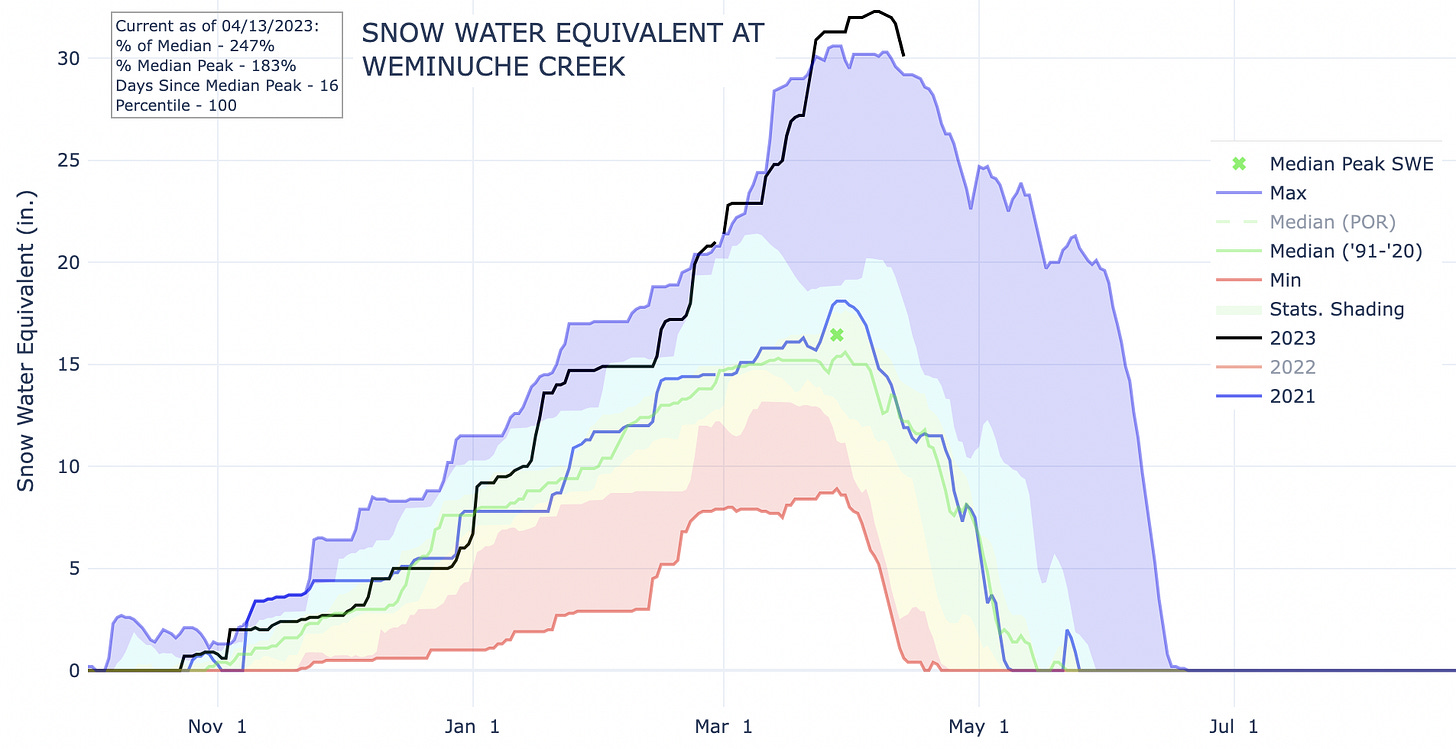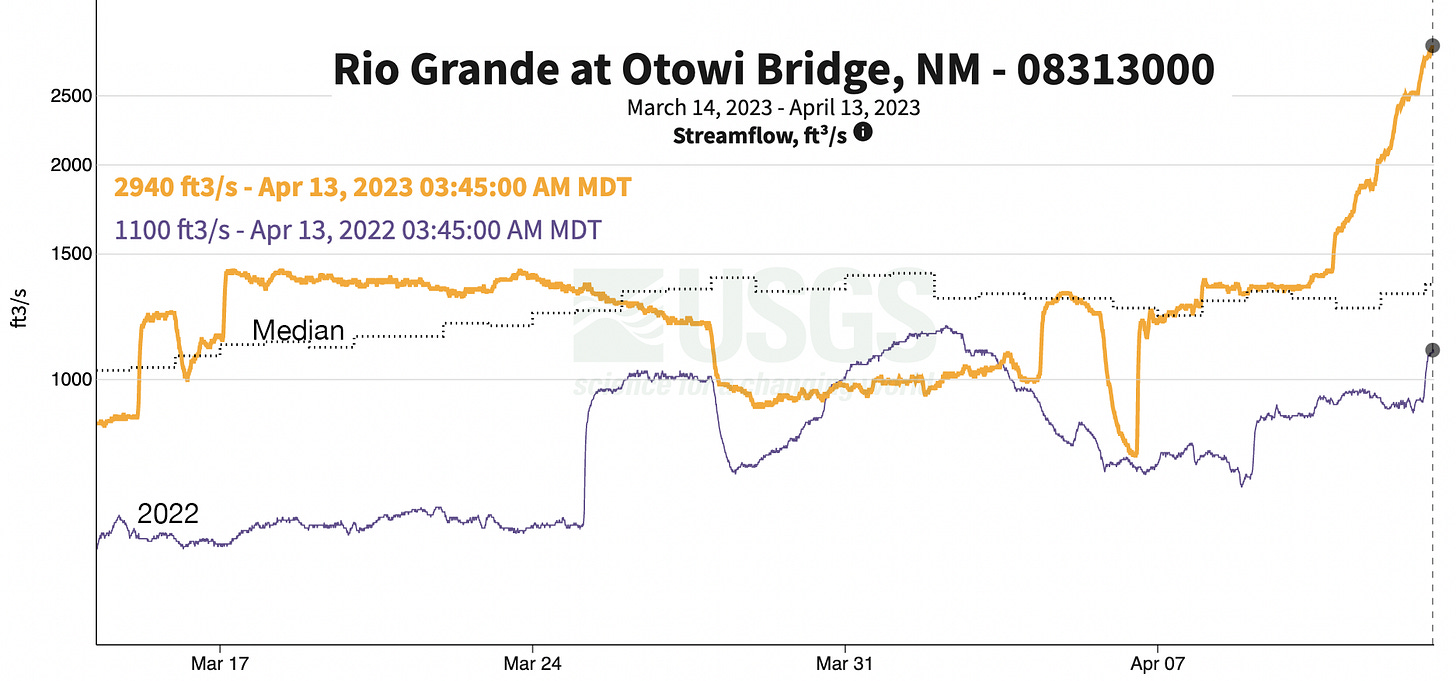Runoff Watch: It has begun
Plus: A subscriber's only teaser from Snow Screen: Part II of the Project Petrichor Environmental Thriller Series
What promises to be the West’s biggest spring runoff in years has begun. A relentless parade of precipitation and cool weather was broken by blue skies and warm temperatures, sending snowpack levels plummeting and causing stream flows to spike. Some areas in the Four Corners Country had even more snow in early April than they did in the whopper, dam-threatening year of 1983. But 1983’s big runoff was due in part to a lot of snow, generally, but also to unusually wet April and May storms and a rapid, late May warming spell combined with heavy rains. All of which still could occur this year.
Here’s the story in a series of SNOTEL snowpack and USGS river flow charts.







And now for a sneak preview of my upcoming novel, Snow Screen: Part II of the Project Petrichor Environmental Thriller Series. This is the prologue or maybe Chapter I (I’m not sure what the difference is, really). I’ll be running chapter drafts sporadically — for paid subscribers only — over the next several months and will hopefully have a finished product sometime late this year. Your feedback is welcome. If you wanna take part, upgrade to a paid subscription.




